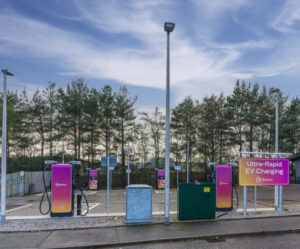Climate control technology is increasingly needed to combat searing temperatures, but the environmental impact of this is only just coming into focus.
63 countries have now signed up to the Global Cooling Pledge, promising to cut emissions from energy use, refrigerant greenhouse gases, and climate adaptation.
A reduction target for this area has been set at 68% less cooling-related emissions by 2050 compared with 2022. To achieve this, specific measures will need to be introduced, including ratifying the Kigali Amendment to the Montreal Protocol by 2024. The associated Multilateral Fund should also be better used to reduce hydrofluorocarbon emissions.
‘Sustainable cooling is fundamental to climate mitigation, adaptation and our sustainable development goals,’ said Clare Perry, UK Climate Campaign Leader at the Environmental Investigation Agency.
‘Coordinated and ambitious action at the global level to achieve sustainable cooling is long overdue and the Global Cooling Pledge is very welcome,’ she continued. ‘But we expect a robust and transparent governance structure to ensure accountability and early implementation and we expect the pledge to be strengthened over time. Otherwise, it’s just empty promises.’
If the initiative is successful, by 2050 these efforts could save around 78billion tonnes of CO2e emissions, and offer significant financial savings. In terms of global heating, these actions could stop a further 0.5C being added to the average annual temperatures by 2100, with cities standing to gain the most due to the well-documented heat island effect.
While the overall push is to reduce the impact of cooling systems, the emphasis here is on improving efficiencies. Heat stress is projected to reduce total global working hours by 2.2%, costing the economy $2.4trillion by 2030. 536million tonnes of food, 12% of worldwide production, is lost due to weak and unsustainable cold chains. Meanwhile, cooling systems are currently consuming 20% of the world’s electrical supply.
Although highly efficient technology is available, it is believed the average air conditioning and climate control installations can only muster efficiency levels two or three times lower than the leading models. A 50% improvement on this performance is needed by the end of this decade to meet the new target, while passive cooling designs are expected to slash building cooling footprints by 25%.
At the time of writing, a full list of signatories has not been published, but the United States, Canada, United Kingdom, and Kenya are all reportedly on-side. More nations are expected to join the scheme before the end of COP28 on 15th December. You can read a full transcript of the Global Cooling Pledge founding statement here.
More on COP28:
Forget COP: UK cities prepare for climate justice action this weekend
WATCH: Supply chain transparency platform SCDP passes proof of concept
Image: Chromatograph
















